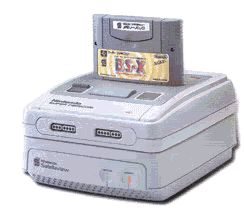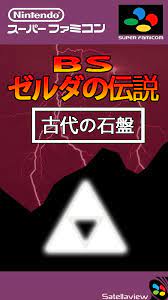
In the mid-1990s, Nintendo, in collaboration with the satellite radio company St.GIGA, introduced the Satellaview—a satellite modem peripheral for the Super Famicom (the Japanese counterpart to the Super Nintendo Entertainment System). Launched on April 23, 1995, the Satellaview allowed Japanese gamers to download games, magazines, and other media content via satellite broadcasts during specific time slots. This innovative system facilitated the release of exclusive Legend of Zelda titles that offered unique gameplay experiences unavailable elsewhere.
BS Zelda no Densetsu

In August 1995, Nintendo and St.GIGA launched BS Zelda no Densetsu via the Satellaview, a satellite modem peripheral for the Super Famicom. This title reimagined the original Legend of Zelda with enhanced 16-bit graphics and introduced innovative gameplay elements.
Players assumed the role of the “Hero of Light,” choosing between male and female avatars, a departure from the traditional protagonist, Link. The game was broadcast episodically over four weeks, with each episode available during specific time slots. This scheduling created a communal gaming experience, as players across Japan embarked on their quests simultaneously.
A standout feature was the integration of the SoundLink system, which provided live voice acting and an orchestrated soundtrack during gameplay. At predetermined times, the game would pause to deliver voice-guided plot developments, real-time hints, or special events, such as temporary item upgrades or sudden enemy appearances. This dynamic interaction between the broadcast and gameplay added depth and immersion, making each session unique.
The overworld in BS Zelda no Densetsu mirrored the layout of the original game but was condensed to an 8×8 grid. Dungeons were redesigned, with layouts spelling “St.GIGA” in tribute to the broadcasting partner. Players aimed to collect eight fragments of the Triforce, defeat Ganon, and rescue Princess Zelda within the time constraints of the broadcasts. A scoring system evaluated performance based on various factors, encouraging replayability and competition among players.
BS Zelda no Densetsu: Inishie no Sekiban

In March 1997, Nintendo and St.GIGA released BS Zelda no Densetsu: Inishie no Sekiban (The Legend of Zelda: Ancient Stone Tablets) for the Satellaview, a satellite-based peripheral for the Super Famicom. This episodic title, broadcast over four weeks, offered players a unique experience set in the world of A Link to the Past.
Unlike traditional entries in the series, players did not control Link but instead assumed the role of the “Hero of Light,” represented by the Satellaview’s male or female avatars. The narrative unfolds six years after the events of A Link to the Past, with Princess Zelda receiving troubling premonitions about Ganon’s return. The Hero of Light is summoned to Hyrule to collect eight Ancient Stone Tablets, believed to hold the key to thwarting this impending threat.
The game was divided into four weekly episodes, each available during specific broadcast times. This scheduling created a communal gaming experience, as players across Japan embarked on their quests simultaneously. A notable feature was the integration of the SoundLink system, which provided live voice acting and an orchestrated soundtrack during gameplay. At predetermined times, the game would deliver voice-guided plot developments, real-time hints, or special events, such as temporary item upgrades or sudden enemy appearances. This dynamic interaction between the broadcast and gameplay added depth and immersion, making each session unique.
The gameplay closely mirrored that of A Link to the Past, with players exploring a familiar overworld and delving into redesigned dungeons to retrieve the Ancient Stone Tablets. The game introduced several unique features, including time-triggered events, weather changes like fog and rain, and side quests that enriched the player’s experience. Additionally, the Pegasus Boots were modified to allow changing direction while running, enhancing maneuverability. Players were also evaluated based on their performance, with scores influenced by factors such as completion time, items collected, and enemies defeated. High-scoring players could submit their results to Nintendo for recognition and potential prizes.
Preservation and Legacy
Due to the ephemeral nature of the Satellaview broadcasts and the reliance on live audio, preserving the complete experience of BS Zelda no Densetsu has been challenging. While enthusiasts have managed to recover and emulate portions of the game, the original real-time voice components remain largely inaccessible, making the authentic experience a rare piece of gaming history.

